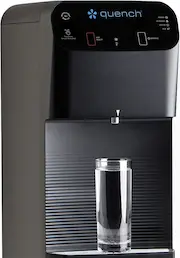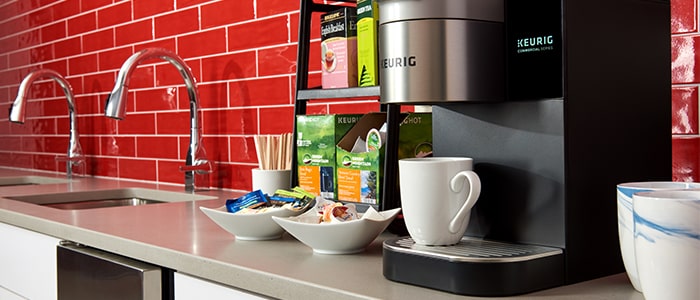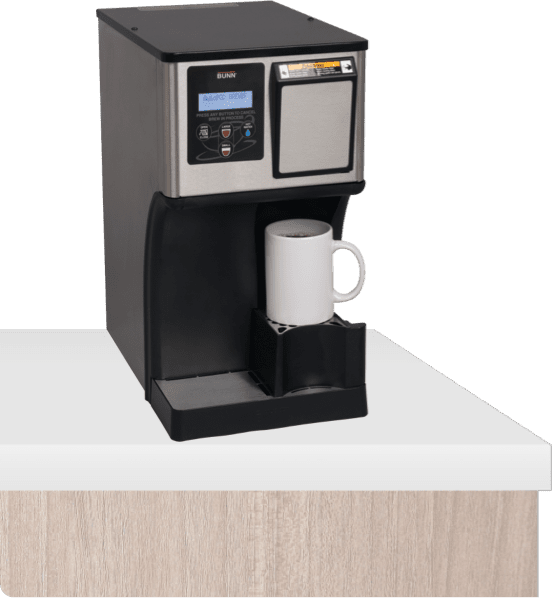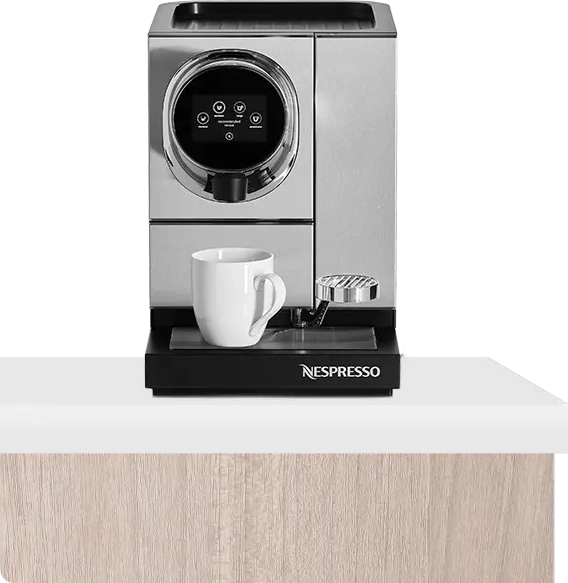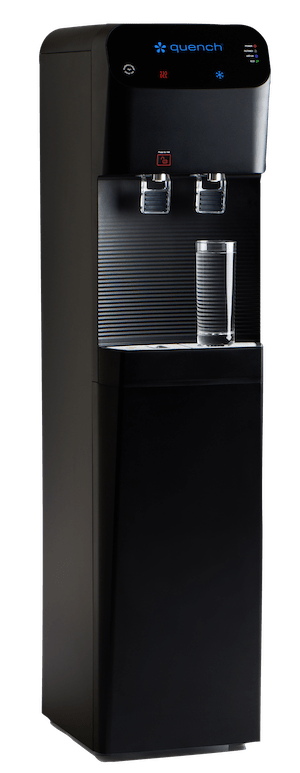Workplaces are always evolving, but one thing remains true — workers love coffee. The National Coffee Association (NCA) reveals that overall coffee consumption is up 5% across the nation since 2015, with 62% of Americans having at least one cup every single day.
For many, fresh coffee is more than just a morning pick-me-up; it’s an important source of motivation and productivity, especially in the workplace. But, do you know how to make the perfect cup of joe?
Read on to learn everything you need to know about making delicious java, including various brewing methods, and how organizations can boost employee productivity and morale with advanced coffee solutions.
How Coffee Beans and Water Impact Your Daily Cup of Joe
The flavorful, aromatic drink we know as coffee starts with beans: Coffee beans are the seeds found inside the coffee fruit — a coffee cherry. Because they’re green and don’t have a taste in their natural state, the beans are heated during a process called roasting. This is what brings out their flavors and changes their color.
Get To Know Your Roasts
Roasts can be categorized into four color groups: light, medium, medium-dark, and dark. Essentially, the longer beans are roasted the darker they become. Although most assume that darker roasts have more caffeine, light roasts actually tend to contain a slightly higher concentration due to the denser beans.
The perfect roast is ultimately a personal preference, but here’s a closer look at your options:
- Light roasts: Light brown and generally preferred for milder coffee varieties, with no oil on the surface of the beans.
- Medium roasts: Medium brown with a stronger flavor and a non-oily surface. Statista reports medium roasts as the favorite coffee roast among American consumers.
- Medium-dark roasts: With some oil on the surface and a slightly bittersweet aftertaste, medium-dark roasts are rich and dark in color.
- Dark roasts: This roast produces shiny black beans with an oily surface and pronounced bitterness. A dark roast coffee is less acidic and, therefore, better for individuals with sensitive stomachs or those prone to acid reflux.
Why Your Water Matters
The quality of your coffee is also greatly influenced by the water you use and your local water quality. When using tap water, let it run for a few seconds before filling your coffee maker, and make sure to always use cold water. This promotes better extraction during the brewing process. But, if your tap water has an unpleasant taste or smell, like chlorine, it’s best to opt for a filtered option.
What’s more, avoid using distilled or softened water for brewing your coffee, because they both lack the necessary minerals and elements to provide adequate flavor. Instead, they leave you with a flat and dull coffee taste.
Brewing Basics — Exploring Different Methods to Make Coffee
If you’re starting with whole-bean coffee, use a grinder to create your coffee grounds for brewing. Make sure to grind the beans as close to the brew time as possible for maximum freshness.
Once your coffee grounds are ready to brew, here are some of the different ways you can prepare this tasty and caffeinated beverage to perfection:
1. Drip Coffee
- Measure coffee grounds: Using a coffee scoop, measure around one to two tablespoons of coffee per six ounces of water for a standard cup.
- Set up your machine: Put a coffee filter in the drip brew basket and then add the grounds.
- Add water: Now, fill the coffee maker’s water reservoir with cold, filtered water.
- Start brewing: Lastly, turn on your drip coffee maker, let it heat the water, and drip it over the grounds. Your freshly brewed coffee will collect in the container below.
2. Pod Coffee
- Prepare the machine: When using a coffee pod machine, start by placing the pod or capsule of your choice into its designated slot.
- Add water: Fill the machine’s water source with cold water.
- Start brewing: Turn on your machine, and it will heat the water, pass it through the pod, and brew the coffee directly into your cup.
- Dispose of the pod: Finally, don’t forget to remove the used pod and dispose of it properly to keep your machine clean and ready for its next use.
3. Instant Coffee
- Boil water: Start by boiling water, depending on how strong you prefer your coffee (i.e., hotter water increases the rate of extraction and leaves you with less flavor overall).
- Prepare your cup: Now, add the instant coffee granules to your cup. Generally, one teaspoon per eight ounces of water is a good ratio to use.
- Add water: Pour the hot water over the instant coffee and stir well to ensure all of the granules fully dissolve.
In each brewing method above, keep in mind that the final step involves customizing your perfect cup of joe. Whether you prefer milk, sugar, cream, or other coffee flavors, you can add them to taste for the most delicious results.
4. Espresso
The NCA report also reveals that coffee drinkers are increasingly choosing espresso-based beverages, with the consumption of cappuccinos, lattes, and flat whites rising by a staggering 50% — particularly popular amongst 25-39-year-olds. That being said, if you plan to make your favorite espresso drinks at home or work, there are a few extra steps and pieces of equipment you’ll need.
- Grind the coffee: Grind the coffee beans to a fine consistency.
- Measure coffee grounds: Use a coffee scale to measure the exact amount of coffee grounds: Typically, you need around 18-20 grams of coffee for a double shot of espresso.
- Pack the grounds: Fill the portafilter with your ground coffee beans and use a tamper to compress the coffee evenly.
- Preheat and brew: Preheat your espresso machine and place the portafilter back into the unit. Now, start the brewing process, and your espresso maker will produce a concentrated shot of espresso.
- Serve and enjoy: After your shot is brewed, you can drink it as is or use it as the base for other strong coffee drinks like cappuccinos or lattes.
If espresso is more your speed, consider Nespresso pod coffee brewers for a quick and easy way to brew espresso-like coffee.
Pair Your Coffee With Advanced Water Filtration
If your workplace is in pursuit of an improved coffee setup, Quench can help. Our wide variety of coffee machines simplifies the regular coffee brewing process and gives your teams access to great-tasting java on demand. This is a great way to help employees enjoy a well-deserved break during the work day.
In addition to delicious taste, we prioritize employee wellness by offering machines that filter, clean, and protect against potential water impurities. Advanced water filtration systems from Quench help improve the coffee experience by:
- Improving water quality and removing impurities to leave you with a better-tasting brew.
- Ensuring a consistent and reliable supply of clean water, eliminating concerns about potential local water quality issues.
- Demonstrating a commitment to employee satisfaction and well-being.
While our units exclusively offer hot-brewed coffee, we know that some may have a preference for cold brew or iced coffee. Fortunately, we have an array of ice machines that are the perfect match for our hot coffee brewers — so your employees can make their iced coffee drink, just how they like it.
And, you can effortlessly order new coffee flavors, break room supplies, or Quench coffee machine accessories through our customer portal to make sure you have everything you need to provide the best coffee-drinking experience.
Ready to choose Quench as your office coffee service provider? Schedule an appointment with a Quench Coffee Expert today.
